Deflating a tire quietly involves using a sharp knife or pliers to cut out the valve stem on the tire. Removal of the valve stems lets the air out without too significant of noise, which is either easier on your ears – or not noticeable to someone else's.
Takedown request | View complete answer on carshtuff.com
Get a sharp folding knife, long nail, awl, or screwdriver. Position your tool above a point on the tire's sidewall. Turning your face away from the tire, quickly and forcefully puncture the tire's surface. Depending on the tool you use, the tire may deflate rapidly or over a couple of hours.
Takedown request | View complete answer on getjerry.com
To slash someone's tires, first, you need a sharp and pointed tool, (a serrated pocket knife works best) then aim for the sidewall and make a quick and forceful strike. Push the blade deeper into the tire while pulling it to the side.
| View complete answer on tirehungry.com
The most common cause of a flat tire is by a puncture due to a sharp object, such as nails or glass. Avoid puncture blowouts by driving around debris in the road or in parking lots whenever possible. Valve stem issues are another common cause of tire problems.
Takedown request | View complete answer on evanstire.com
The burst pressure of a tire is about 200 psi.
Takedown request | View complete answer on denverpost.com
If you don't hear your tire going flat, you're going to feel it.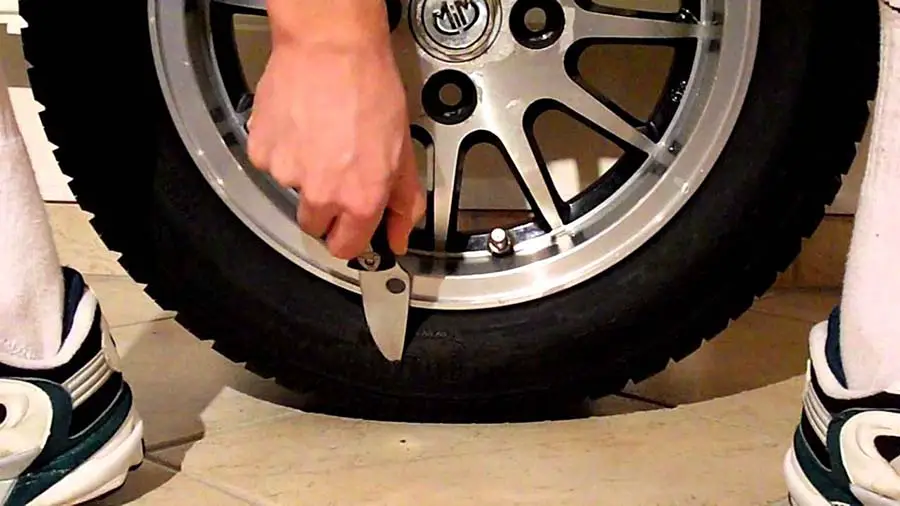 When you have a flat tire and you're driving, it'll feel like your vehicle is being pulled to the side of the flat tire, and it'll feel like you can't accelerate.
When you have a flat tire and you're driving, it'll feel like your vehicle is being pulled to the side of the flat tire, and it'll feel like you can't accelerate.
| View complete answer on kaltire.com
Given that a tire is filled with air, there is a high chance that it'll make a loud sound when being punctured. Avoiding that takes a little bit of skill and the right tools. Deflating a tire quietly involves using a sharp knife or pliers to cut out the valve stem on the tire.
Takedown request | View complete answer on carshtuff.com
Because of how sharp and strong a screwdriver is, the DIY tool has no problem causing a puncture or tear in a tire, providing an expensive trip to the mechanics to get it fixed.
Takedown request | View complete answer on hotcars. com
com
There may also be tire damage from hitting a curb. Your tire may have suffered damage to the sidewall that could lead to a possibly dangerous blowout. If the impact bent the rim, the steering wheel would wobble back and forth.
Takedown request | View complete answer on nsford.com
An average of 1/2 inch. It varies considerably with the tire casing design, tread depth and where the nail is trying to go through the tire.
Takedown request | View complete answer on wapcar.my
Tire compounds are made up of a combination of natural and synthetic rubbers, as well as carbon black and other chemicals. This makes their rubber compounds susceptible to damage from direct contact with gasoline, oil and antifreeze, as well as solvents often found in family garages.
| View complete answer on tirerack.com
Take off your jacket and roll it onto the tire then push the knife over it. Your coat will make noise, so this cannot be done while someone is there even at a distance. This way, when you use a knife to cut a tire, the tire will deflate a lot faster, perhaps immediately.
Takedown request | View complete answer on talkcarswell.com
A slashed tire will deflate much faster than a blown tire. Depending on the severity of the damage, a slashed tire can go from full to flat in a matter of seconds. If your tire looks less like a donut and more like a pancake, then it was probably slashed.
Takedown request | View complete answer on getjerry.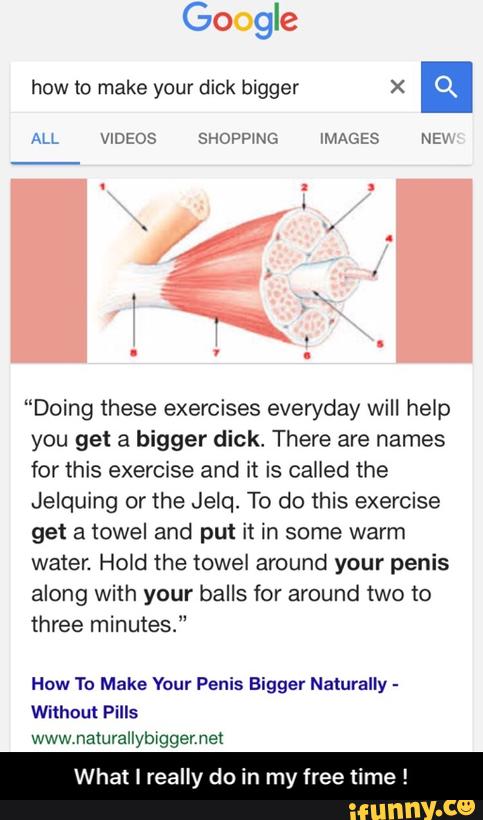 com
com
Once you know you've lost tire pressure, you should carefully reduce speed to a maximum of 50 mph as soon as possible. Additionally, you shouldn't drive for more than 50 miles on a run-flat once it loses pressure.
Takedown request | View complete answer on mbscottsdale.com
A tire blowout will immediately cause your car to begin to slow down as well as pull to the left or right, according to Sun Devil Auto. This can cause your vehicle to lose control, according to National Highway Traffic Safety Administration (NHTSA).
Takedown request | View complete answer on allstate.com
Know What a Blowout Feels and Sounds Like
When the tire explodes, you may feel the vehicle start to slow down suddenly and then pull sharply to one side. If one of the front tires has popped, the steering tends to feel more forceful, while a rear-tire blowout often causes vibration in the seats.
If one of the front tires has popped, the steering tends to feel more forceful, while a rear-tire blowout often causes vibration in the seats.
| View complete answer on ingramparkcj.net
There's a common misconception that insurance companies won't cover three slashed tires but will cover four slashed tires instead. The truth is that you're covered for any number of slashed tires, as long as you have the right coverage.
Takedown request | View complete answer on progressive.com
The three-tire rule states that your auto insurance won't pay for damages if only three tires are slashed. No one is certain as to where this idea originated, but it is false. However, your liability-only coverage won't pay for any damage to tires. You need more than merely basic coverage to be fully protected.
You need more than merely basic coverage to be fully protected.
| View complete answer on autoinsurance.org
probably not. But 'pellet guns' can shoot a pellet anywhere range from a mere 100fps to nearly 1000fps — which nearly approaches that of a slower . 22 caliber round. Handily, sufficient force to penetrate a tire with such a small grain pellet.
Takedown request | View complete answer on quora.com
First, you may hear a loud boom or bang, this is the tire popping and reverberating throughout your vehicle. Next, a whooshing sound is the sound of air escaping your tire and lastly, a flapping or flopping sound is of the deflated tire continuously hitting the road.
Takedown request | View complete answer on flemingtonbmw.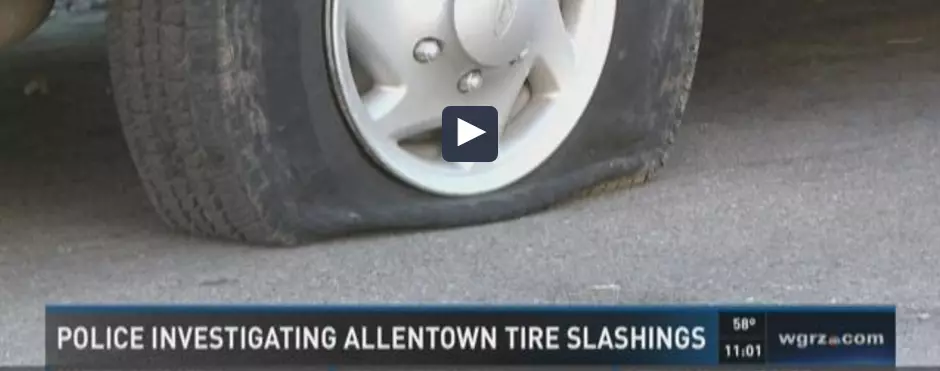 com
com
← Previous question
What is a Japanese soda?
Next question →
Can polyps go away without surgery?
If the process of cutting tires causes loud noise, it will attract attention. Focus on learning the process of cutting the tires quietly and without attention.
Cutting a tire or puncturing it is very difficult. Because tires have incredible durability. They withstand the weight of the vehicle and everything in the car, rolling at high speeds on highways or bumpy roads. So many people have tried to use power and choose the right way but nothing is sure you will damage it.
The best way to reduce tires without making noise is to puncture. It is not entirely reliable because it depends on the type of tire you want to puncture but is currently the best solution. You should go away after doing that.
The tire will look normal as soon as you puncture, the tire will keep getting flat continuously until the owner replaced a new one.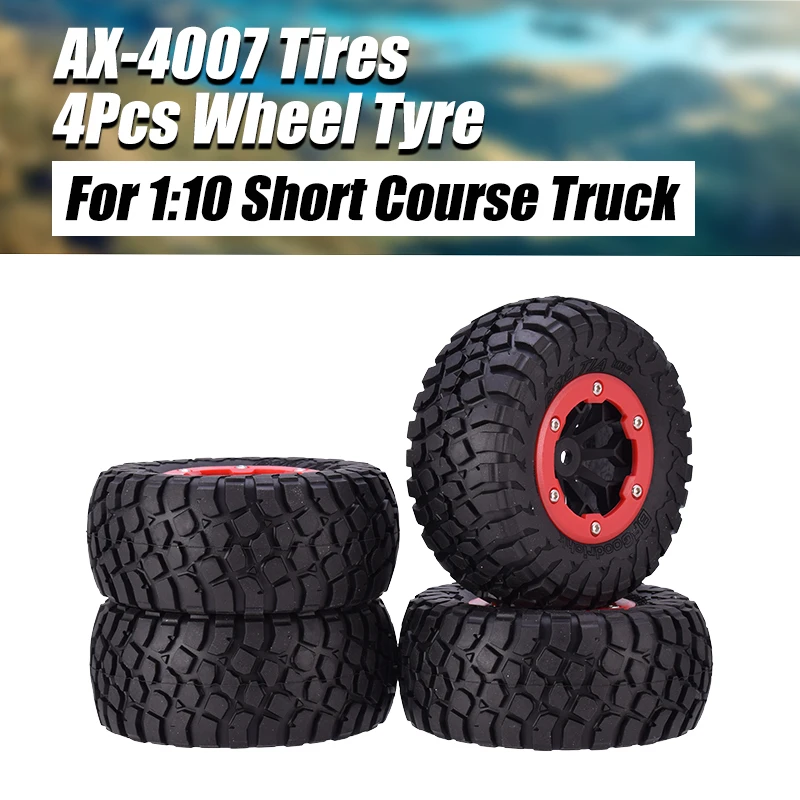 Because such a puncture is difficult to find, it cannot be detected immediately.
Because such a puncture is difficult to find, it cannot be detected immediately.
There are many methods to repair punctured tires such as cold patch, hot patch, self-filling. The methods will have different costs. But when repaired tires are not good if the owner goes at high speed, especially highways will make things worse. Not every punctured tire can be repaired.
You can use sharp. It must be strong enough not to be bent or broken and very sharp.
The diameter must be large enough. If it is already used, sharpen it more aggressively. You want it to be easier to puncture the tire than you can put it on a fire until it glows, then dip into the engine oil about 10 times. However, this method should not be used too much as objects may be brittle.
Make it easier by lubricating it. To carry this item you should wrap with plastic bags, paper, and tape to ensure your own safety.
You should not go by car in this case, you walk and check around you and use the item to press on the tires. Do the same thing on the other side of the car if you want. After doing so, put it in your pocket so others don’t have evidence.
Do the same thing on the other side of the car if you want. After doing so, put it in your pocket so others don’t have evidence.
We recommend that you do each one at a time, and this should be methodical and extremely careful. You have to look natural, they won’t notice what you do. For example, one hand holding the phone pretends to text and the other hand performs.
Always be careful and check your camera, check to see if anyone is around or in a car. Doing it at night would be a lot easier, with fewer people going in and out at the time. Wear a hat and mask to prevent others from knowing who you are. The area where you puncture the tires may be on watch, trying not to draw attention to them, which is not safe for you.
Be as careful as you can and don’t let the police catch you. Because nowadays there are many automakers born with very high values. The police will rely on the damage you caused to criminal prosecution and administrative fines, or worse, you could be put in jail for your behavior.
You can also use a knife to cut the tires. But with the condition that the knife is brand new and extremely sharp. You should really sharpen 2 sides of the knife. Take off your jacket and roll it onto the tire then push the knife over it. Your coat will make noise, so this cannot be done while someone is there even at a distance.
This way, when you use a knife to cut a tire, the tire will deflate a lot faster, perhaps immediately. And it is completely irreparable. Owners will have to replace the new.
For convenience, you should have a good idea of time. The small car will take 30 minutes for the tire to deflate after you puncture, the big truck will take about 8 hours.
During this time the driver will go somewhere and think the tire is cut there. Or the tire has trouble getting into traffic. Even if drivers stop immediately when they feel something is wrong, it is not possible to know when and where their tires were cut.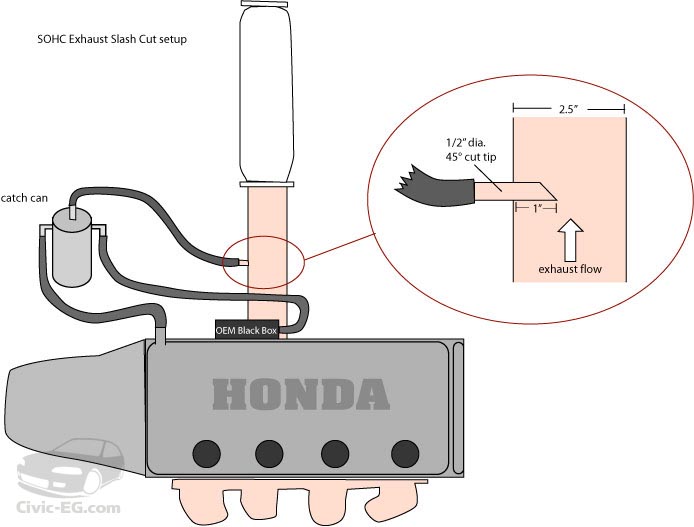
Go at high speed, the car will turn around when the tires are flat and the driver will recognize immediately. It will be dangerous for the vehicle and the person in the car.
What’s worse is that old truck tires after being punctured a number of times they can explode.
Long-term observation and monitoring will help you determine when and how to act. To make everything perfect, you need to prepare carefully. You need to use the best and most suitable item. Do not hurry or sketchy. It all affects you. The most important thing is not to let the camera save you. It will be great evidence to accuse you. The owner of the car can sue you.
After doing so, do not tell or brag to anyone. There is no explanation for your action. But you should not trust anyone, they may resent and denounce you or tell the victim. It was worse.
Do not leave any evidence, especially the items you use to cut the tires. After done, you must bring it back. Because tires are extremely necessary and expensive, they can endanger the vehicle’s owner and those around them. People will be angry when they find out their tires are cut and of course, will alert the police.
People will be angry when they find out their tires are cut and of course, will alert the police.
Above we talked about how to slash tires without getting caught. Hope you have found the best solution and it is useful for you. Wish you carefully and success. Thank you for reading our article. See you again.
Maybe you didn't share a parking space. Or just a goat caught. There is a way to harm the car owner.
No, I will not tell you how to scratch a car or pierce a wheel, although I will write down how to pierce a wheel better later.
Heard the story at the garages. If into the exhaust pipe, throw a small metal ball far, then create a lot of problems for the car owner. When the engine is running, vibration is distributed throughout the exhaust pipe. From which the metal ball inside jumps, which is bad. This creates a characteristic clatter. Having heard such a clatter, auto mechanics will immediately say about a malfunction in the engine, they say, valves knock or something else. They say they need urgent repairs. People say that the whole engine was sorted out, but the ringing did not stop coming. It is necessary to throw the ball far away so that it gets into the muffler chamber. A ball with a diameter of 4-6 mm from any bearing. This is of course cruel, but there are also goats.
They say they need urgent repairs. People say that the whole engine was sorted out, but the ringing did not stop coming. It is necessary to throw the ball far away so that it gets into the muffler chamber. A ball with a diameter of 4-6 mm from any bearing. This is of course cruel, but there are also goats.
Properly punch the wheel.
If you poke a wheel with an awl or a knife, it will be clear to the owner that the wheel has been pierced. And if you are at odds with him, then he can guess that it is you. And the wheel just sticks and that's it.
But if you pierce the wheel with a needle from a syringe in several places, then the story is completely different. The holes are very small and they are unlikely to be determined at the tire fitting. So it will be tormented, pump up the wheel every morning. And the number of holes, you can adjust the speed of lowering the wheel. For example, five punctures and the wheel descends completely in two days.
They say the car will not start, if potatoes are stuffed into the muffler pipe . But it is easy to get it, and if you spray the rest of the mounting foam there in the evening. Then by morning it will completely harden and will make a lot of difficulties for the owner of the car.
How to puncture tires
The wheels of a car can be damaged in many ways. The failure of the wheels causes inconvenience or even a threat to the driver, not to mention the cost. There are three ways to "neutralize" the wheels: cutting, wire hedgehogs and "studding" roads (which has already been described).
Cutting
Imagine that your "sponsored" area is flooded with these scum on all-terrain vehicles, or you accidentally stumble upon a powerful truck where it is not supposed to be. Quickly cut them all tires. Especially annoying when all four tires are cut. The cuts on the side of the tire are almost impossible to repair, whereas if you puncture the rim of the wheel, patches can be applied. The choice is yours.
The choice is yours.
An excellent tool for this job is a knife with a thick handle and a symmetrically sharpened double-edged blade (stylet type). The shape of the blade prevents the knife from getting stuck in the tire, and the point makes it easy to pierce the side of the tire. This weapon is easy to carry in your pocket if you find a piece of leather and cover the blade with it. And, of course, one such tool should always be kept in the glove compartment of your car in case you need it. Another way to puncture your chosen tires is to place small pieces of wood nailed under the wheels of a parked car, or to place a wire hedgehog under them. However, these methods are more time consuming, less reliable, and more suitable for a moving vehicle or for situations where the whistle of air coming out of a punctured tire can give you away.
Hedgehogs
Of course, it's best to use hedgehogs to ensure your own safety in case you are being followed. They are also good for stopping vehicles on asphalt roads. Wire hedgehogs are very tiring to cook and are unlikely to puncture a tire on a soft dirt road. However, on "minor" paved roads.
Wire hedgehogs are very tiring to cook and are unlikely to puncture a tire on a soft dirt road. However, on "minor" paved roads.
If they are scattered in large numbers close to each other, from one shoulder to the other, they will cause great confusion. Would you like to drive to the place where these dirty races start?
To cook hedgehogs, you will have to spend a little money on gas welding equipment or a gas welding transformer of at least 70 amperes. You won't get a 20-70 amp adjustable transformer for less than $59. High-voltage transformers are correspondingly more expensive, but work is faster with them, and the quality of welding is more reliable. Read the instructions for working with the welding machine carefully and always use a protective shield (intense light can cause retinal burns).
Hedgehogs are made as follows: get nails at least 10 centimeters long, the thicker the better (ATV tires are very hard), cut off the hats with a hacksaw or wire cutters.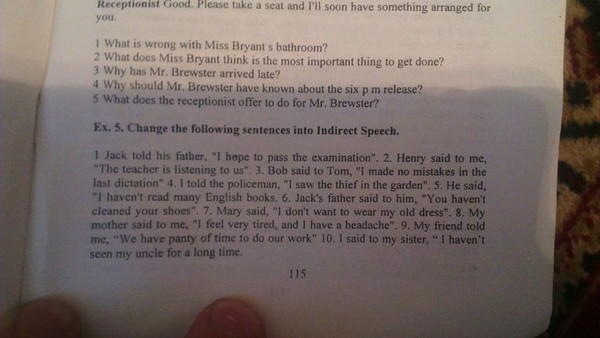 Sharpen both ends on an emery wheel. Extremely sharp ends are not needed as the car's weight will still press the nail into the tire, even if it is rather blunt Weld at least 3 nails together in different planes so that no matter how the hedgehog hits the ground, the sharp end is all would still be on top.
Sharpen both ends on an emery wheel. Extremely sharp ends are not needed as the car's weight will still press the nail into the tire, even if it is rather blunt Weld at least 3 nails together in different planes so that no matter how the hedgehog hits the ground, the sharp end is all would still be on top.
To weld them in this way, place one nail in a vise, hold the other with pliers, and operate the electrode with your free hand. This whole process is hampered by poor visibility through the glass of the protective shield. To make hedgehogs in large quantities, it is required to make a fixture that would firmly hold the second nail in relation to the first during welding.
Before. how to use the hedgehog for its intended purpose, sprinkle black paint on it so that it stands out less on the pavement.
The pinnacle of chewing technology would be an automatic hedgehog spreader mounted on the bottom of your car and controlled from the driver's cab. Such a device can be made, for example, from a tin box attached to the bottom of the car.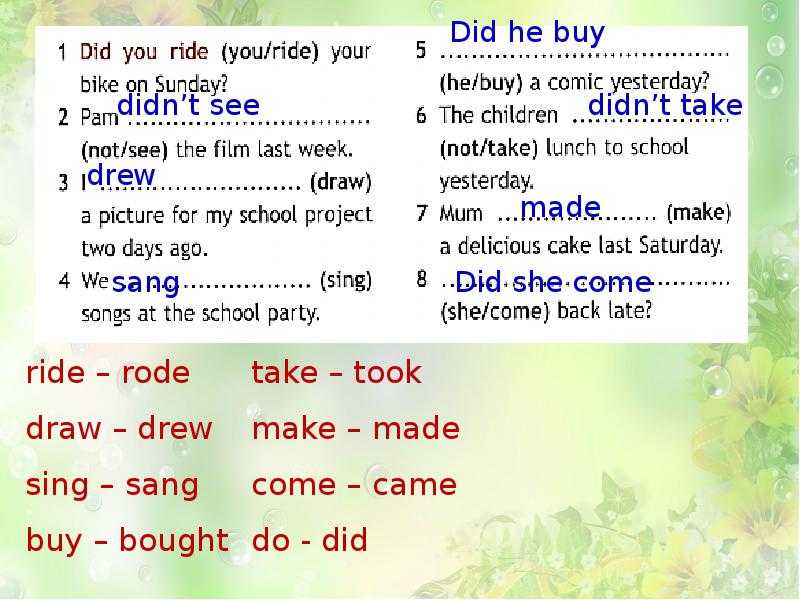 Several hedgehogs could be scattered at the same time by pulling a lever with a cable (as for a hood lock), thus opening the box lid. Try different designs.
Several hedgehogs could be scattered at the same time by pulling a lever with a cable (as for a hood lock), thus opening the box lid. Try different designs.
Field Notes
Road tires and hedgehogs are not effective against filthy motocross bikes because their narrow tires are too small a target. One possible method to puncture motorcycle tires is to drive many nails into a thin piece of plywood. Place plywood in each motorcycle track and cover it with sand or earth so that only the nails protrude from the surface.
We are waiting for your suggestions, what other methods can be used to puncture motorcycle tires, or in any other way to stop these very destructive machines. Remember that most motorcyclists are children or teenagers. Be careful! Many of them drive at very high speeds. When placing hedgehogs, nails, etc., keep the rider's safety in mind.
Many motorcyclists are of the most uncouth, rude, and potentially dangerous breed of "americanus chump. " BE CAREFUL! I think you don't want to be caught by these retards, or be suspected of acting against them.
" BE CAREFUL! I think you don't want to be caught by these retards, or be suspected of acting against them.
It's very easy to make a hedgehog if you poke half a dozen long nails into a golf ball so that they stick out in all directions. Spray the whole structure with paint that matches the color of your chosen place on the road. Remember that carrying a box of all these gadgets with you is not safe, and they may arouse the suspicion of some policeman if he stops you and randomly decides to search the car for an open bottle of alcohol, drugs or stolen goods.
Weld the nails crosswise, bend them and sharpen from below.
An article about what a driver can do if a wheel is punctured on the road: an algorithm of actions, necessary tools, a money issue. At the end of the article there is a video on what to do if a wheel is punctured.
Article content:
When driving on the road, there are often unforeseen situations for which you may not be prepared. It can be:
It can be:
It is not possible to prepare for all force majeure, but some basic skills can still come in handy. What to do when a car has a broken tire?
First of all, you need to understand that nothing can be changed - the wheel is broken and now it depends on the coordination of your actions how long you will stay with an immovable car. You can try to fix a punctured wheel yourself or have someone help you.
First, let's look at the situation when the driver tries to do everything himself.
You will immediately feel that the wheel has been punctured. If this happened to the front axle, the car will pull to the right or left. If the problem is in the rear axle, unpleasant extraneous sounds will be heard. So, a puncture has been detected and now it is necessary to smoothly stop, slowly reducing speed. It is best to hold the steering wheel tighter, because if it is punctured, it will begin to pull out, and this is fraught with negative consequences in the form of an accident or driving into a ditch.
It is best to hold the steering wheel tighter, because if it is punctured, it will begin to pull out, and this is fraught with negative consequences in the form of an accident or driving into a ditch.
It is best to stop on the side of the road or at the exit from the road - so your car will not interfere with anyone, and you can inspect and repair the wheel without any problems. If it is not possible to get off the road, you will have to turn on the alarms in the car and set the emergency stop icon (if available).
You may be able to get off with a small loss of time and money if the puncture is insignificant. Most wheels are equipped with tubeless tires that do not immediately deflate with minor punctures. You can drive to the nearest gas station, pump up the tire and move towards the nearest tire shop. However, at some gas stations there is a tire fitting service, and you don’t have to go far.
Small punctures can also be repaired with a sealant designed for short wheel repairs.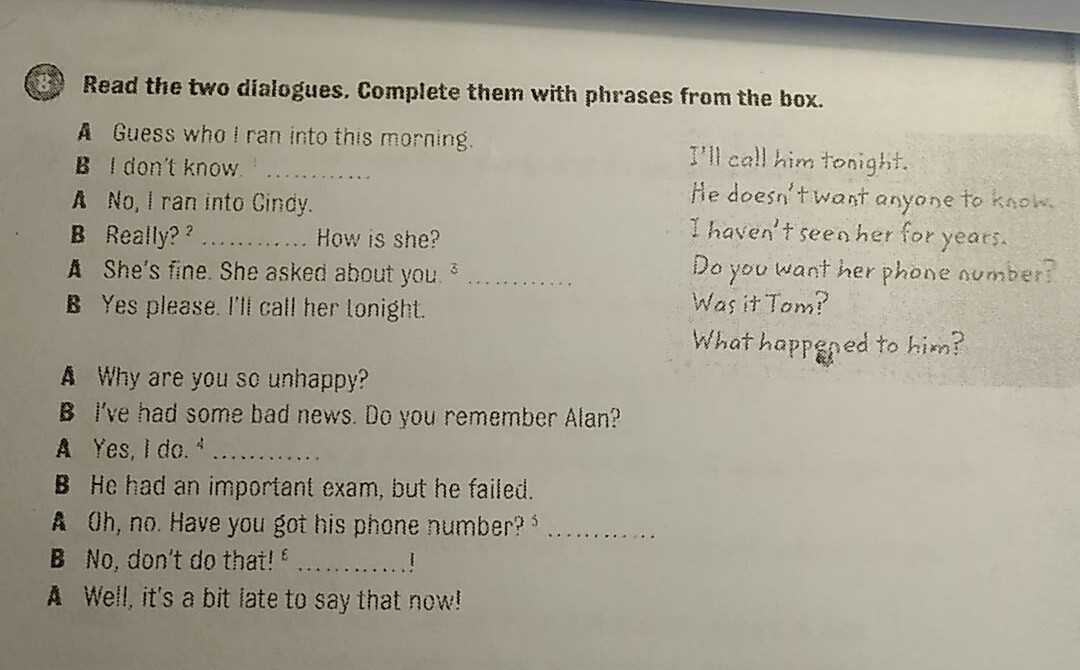 It will seal the puncture and also create the necessary pressure in the tire.
It will seal the puncture and also create the necessary pressure in the tire.
When you find that the tire is completely flat, the methods described do not make much sense. Here we will have to act in other ways.
Of course, if the car has an inflated spare tire, a rescue jack and a set of tools, the process of replacing a dysfunctional wheel will not take much time. Your algorithm of actions is as follows:
If you have a small compressor or mechanical pump, inflate the supplied wheel and move on. It is advisable to take the removed punctured wheel immediately to the tire shop in order to repair the tire as soon as possible, if possible.
It is advisable to take the removed punctured wheel immediately to the tire shop in order to repair the tire as soon as possible, if possible.
If the tire is deeply punctured or cut on the side of the wheel, you will most likely have to get rid of it and get a new spare tire.
There are situations when a spare tire is available, but they forgot to buy a jack or simply laid it out as unnecessary. In this situation, you will need outside help.
Well, if the puncture occurred in the area where you have many friends, you can call them and they will come to the rescue. If acquaintances are busy or a puncture occurred on a country road, you will have to take the position of a voter in anticipation that one of the drivers will stop to help you.
Another option is to call a taxi, having previously told the dispatcher about your problem . Surely, any taxi driver in the trunk will have the necessary list of tools and a jack, which are so necessary for a puncture.
Of course, when you stop your car to borrow a jack or repair kit, be prepared to pay a certain amount. It will be enough to 5-10 dollars, depending on the degree of assistance provided. You may come across a noble driver who will not demand a fee, but, as practice shows, there are fewer and fewer of them.
By the way, you can try to buy a spare tire from a stopped driver if you don't have one.
How much will it cost to repair a flat tire? Tire fitters will inspect the puncture free of charge, after which they will issue a verdict. Repair of a tire damaged from the side will cost 10-20 dollars. A patch is installed there, and the tire will be able to serve for some time as a spare. A puncture in the center of the tire will cost a little less - up to $ 15. A special tourniquet is installed at the puncture site, which creates a vacuum and does not allow air to escape from the tire.
Most often, punctures occur due to poor quality road surfaces. Yes, if the puncture occurred as a result of falling into a pit, you have every right to monetary compensation from the road service. But this will require a lot of time from you, and, most likely, you will have to go to court, since it is unlikely that it will be possible to collect payment on a voluntary basis.
Yes, if the puncture occurred as a result of falling into a pit, you have every right to monetary compensation from the road service. But this will require a lot of time from you, and, most likely, you will have to go to court, since it is unlikely that it will be possible to collect payment on a voluntary basis.
Most of the holes appear in the spring when the snow melts. Therefore, if you see deep puddles on the road that cannot be avoided, reduce your speed to a minimum. The impact will not be too strong and is unlikely to result in a puncture or damage to the wheel. As for metal objects and glass, they shine well in the sun, so it will not be difficult to go around them during the day.
Compliance with these simple rules will help reduce the risk of puncture to a minimum. But even if a wheel puncture has happened, you can try to find an adequate way out of this seemingly difficult situation.
Video on what to do if a tire is punctured:
A self-tapping screw or a sharp stone lying on the road can cause a lot of trouble for the driver. After reading this article, you will have a ready-made sequence of actions to take if you have a flat tire.
If for an experienced driver a wheel puncture is just a small nuisance that takes half an hour to set up a spare tire, then a novice, faced with a similar problem for the first time, will definitely be confused. Indeed, many questions will immediately arise in his head: “what to do now?”, “How to replace the wheel on your own?” and “can I get to the car service on a flat tire?”. Therefore, we will deal with the situation in order.
Tires with and without tubes
There can be many reasons for a flat tire. If you have a chamber wheel (that is, a chamber is inserted into the tire, which was actually inflated), then it is rather unfortunate to run into a sharp object, and the tire will go down in a matter of minutes.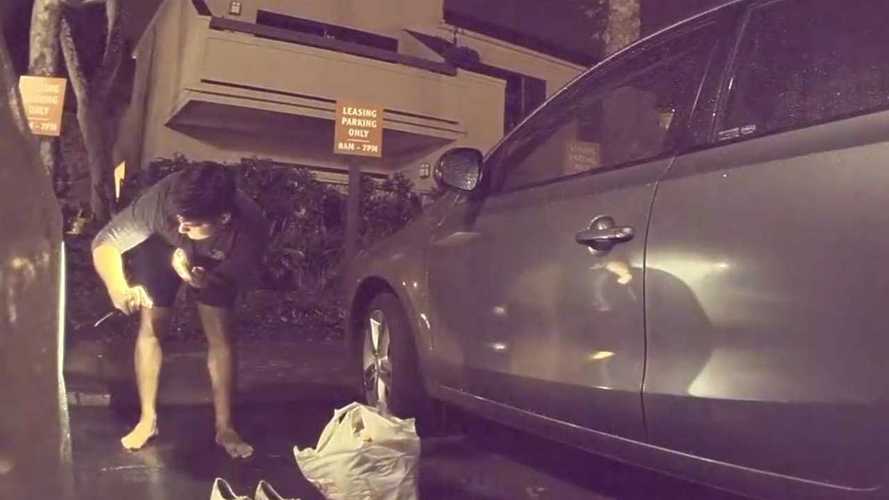 Imagine if this happens at speed... That's why most automakers fit their cars with safer tubeless tires. Drivers drive such cars for months with a screw in the wheel and do not notice it.
Imagine if this happens at speed... That's why most automakers fit their cars with safer tubeless tires. Drivers drive such cars for months with a screw in the wheel and do not notice it.
The fact is that inside tubeless tires there is no separate chamber, and the pressure is kept due to the tight fit of the tire beads to the disk. In the event of a puncture, a tubeless wheel will bleed air much more slowly. Of course, if the self-tapping screw (or something else) remains at the puncture site. A special viscous solution is applied inside the tubeless tire, which is glued to the self-tapping screw, “closing the hole”, and does not allow air to leave the wheel.
Four causes of "baiting" of air in the wheel
There are many reasons for letting air out of a tubeless tire. This is not only a puncture or breakage of the spool (this is a valve located in the nipple that regulates the passage of air during inflation), as is the case with a chambered wheel, but also a side cut or peeling of the tire from the disk.
1. Tread puncture
Perhaps the most common cause of a flat tire is a puncture. Nails, pieces of wire or other metal objects, unfortunately, are far from rare "guests" on the roads. What can we say about the sharp pebbles found here and there on a country road ...
In most cases, metal objects get stuck in the tread. And this is good! Firstly, the self-tapping screw is not difficult to notice, thereby establishing the puncture site. Definitely harder to find an empty hole. Secondly, the object remaining in the tire inhibits the release of air from the wheel.
Many will be surprised, but it is better not to pull a protruding foreign object out of the tread. If the puncture is small, this will allow you to get to a car service without changing the wheel to a spare one, but only periodically pumping it up with a pump, and there you can start fixing it. In addition, with the self-tapping screw not removed in the tire fitting, it will be much easier to find the cause of the air leak, pull out the stuck object and seal the hole.
2. Side cut tire
Tire cuts are much less common than punctures. The sidewall of the wheel is usually damaged: it is much thinner than the running part of the tread.
The cut is usually caused by diving into a sharp-edged pothole or an unfortunate collision with a curb. So park carefully. Sometimes, however, cuts do not depend on the driver - after all, one of the "well-wishers" could try. In any case, the cut must be examined. In case of minor damage to the wheel, you can still try to restore it (in a car service). If the cut does not reach the cord (rings of soft metal threads that run along the entire inner diameter of the tire), then the wheel usually does not flatten. With a more severe cut, the tire will have to be changed.
In some car services, the masters can offer you the restoration of a wheel with a serious cut. Even if the tire does not deflate, under the influence of pressure it can burst at any time. And, most likely, this will happen while driving, and the consequences can be very serious.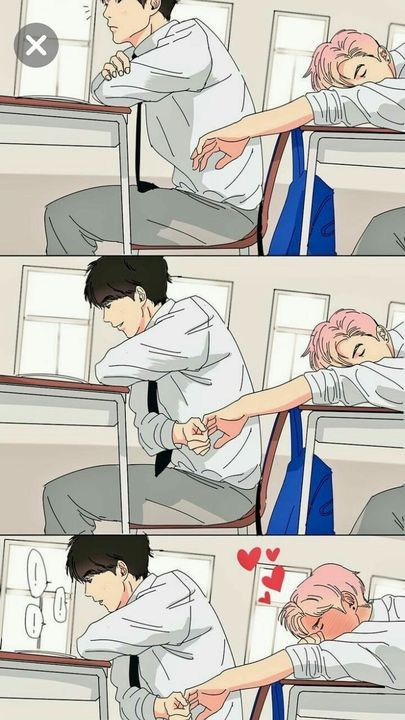 So it's not worth the risk.
So it's not worth the risk.
3. Loss of tight contact of the tire with the disc itself
Driving on "high-quality" Russian roads often leads to disk deformation. Enough to fall into the hole. Inexperienced drivers may also encounter this problem due to a strong impact on the curb while parking or turning (what is called: "not fit"). The disk is deformed, as a result of which the tire bead seal becomes leaky, and air begins to escape into the gap formed.
Violation of the geometry of the rims entails many problems. Firstly, a dent in the disc spoils the tire, on which a “hernia” often occurs. In this case, rubber can no longer be saved. Secondly, disk deformation often leads to increased vibration of the car body or “beating” of the steering wheel. As a result, the suspension will also suffer.
However, this problem can be solved by straightening (aligning) the disk in any tire fitting.
4. Broken nipple or spool
And finally, another reason for a flat tire is a malfunction of the nipple (inlet-outlet device) or spool (valve inside the nipple). It is very simple to diagnose the “etching” of air through the nipple: just lick your finger and smear the outlet with saliva. If the liquid starts to bubble, then the problem is in the nipple.
It is very simple to diagnose the “etching” of air through the nipple: just lick your finger and smear the outlet with saliva. If the liquid starts to bubble, then the problem is in the nipple.
To stop air leakage, you will either have to glue the place where the nipple valve fits on the disk and then you can’t do without tire fitting (the wheel must be disassembled), or replace the faulty spool and re-inject air into the wheel.
What should I do if the wheel "punches" while driving?
If during the trip you heard loud "squishing" sounds, then, most likely, you have a flat tire. When "breaking through" the front tire, the car can also "lead" to the side. Do not rush to press the brake pedal, despite your instincts. Otherwise, the drift is guaranteed. Try to keep the car on a straight path even if it is drifting to the side. You need to let the car stop smoothly and on its own, ideally on the side of the road. Turn on your hazard warning lights and put up a warning triangle to protect yourself from being kicked in the butt. And then deal with troubleshooting.
And then deal with troubleshooting.
How to identify the location of the damage?
First, inspect the wheel and listen. You can often hear air escaping when punctured. This will help you find the hole.
However, it also happens that the tire outwardly looks intact, but does not hold air. In this case, you need to pump up the wheel one to one and a half atmospheres, apply soap suds on it and see where air bubbles appear. If this does not help, you will have to remove and immerse the entire tire in water.
If these methods do not help, then there is another one. True, you will have to disassemble the wheel and run a rag along the inner surface of the tire. The fabric will certainly catch on to a foreign object.
Driver's lifesaver: spare tire and repair kit
Be sure to bring a pump and repair kit with you. After all, no one is immune from hitting a nail. Well, a spare wheel, a jack and a balloon wrench, of course.
Installing a spare is pretty easy. For this, the girl does not have to strain at all - you can stop a passing car. In Russia, people are sympathetic, they should not leave in trouble!
1. First, unscrew the mounting bolts from the wheel.
2. Install wheel chocks (large stones will do instead), shift into gear, and apply the handbrake to keep the machine from moving during repairs.
3. Raise the desired side of the car on the jack. At the same time, make sure that the car does not warp in the process of lifting.
4. We change the “punctured” wheel to a spare one.
5. We tighten the bolts on the wheel until they stop, but do not tighten yet.
6. We lower the car.
7. And now we completely tighten the bolts.
At the same time, moving on the dokatka, you should not accelerate much. And of course, in the near future it must be replaced with a full-size wheel.
If the puncture is small, then you can get by with a repair kit by closing the puncture.